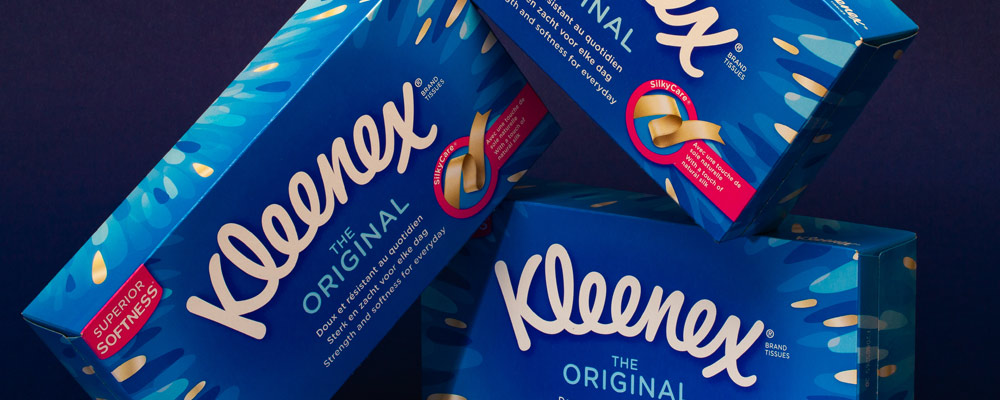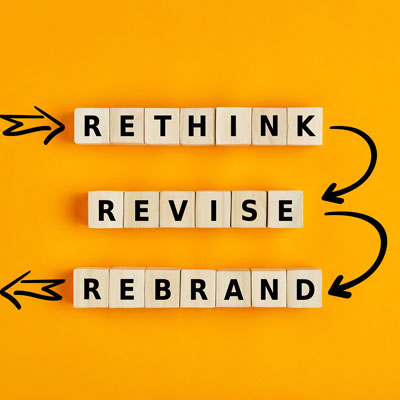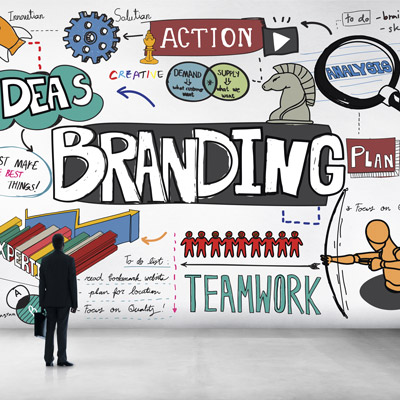Blogs.
Branding 101: Customers buy your brand first, then your product.
 We all want to believe that our customers are purchasing our incredible product—after all, for most companies, the product or service that is being sold is where most of the time, energy, and cost is directed. It’s for precisely this reason that business owners often wince when they finally make one game-changing discovery: your customers are purchasing your brand first, then your product.
We all want to believe that our customers are purchasing our incredible product—after all, for most companies, the product or service that is being sold is where most of the time, energy, and cost is directed. It’s for precisely this reason that business owners often wince when they finally make one game-changing discovery: your customers are purchasing your brand first, then your product.
The two principles of consumer psychology.
There’s a reason why companies like Nike, Nestle, and PINK continue to exist, even in the face of equally-priced, and in some cases, higher-value products which function exactly the same way:
Principle #1: Consumers value branding above most everything else.
When people build a relationship with a company, it’s rarely with the product itself.
A stellar product will be remembered for its function and usefulness, but that doesn’t necessarily mean that the brand will be remembered. In fact, the durability of a high-quality product or longevity of a service can actually override the need in a consumer’s mind to purchase a second or third iteration of the product—the determining factor will be the influence of the brand.
People are visual.
Not all products and services are “visual” and have a material form, but brand is always visual. Branding exists in the minds of consumers as a visual entity that they associate indefinitely with your product or service.
What does your branding consist of?
Branding consists of your logo, the color palette and imagery that you utilize for all company-related marketing, communications and packaging materials, your website design, and any visual content related to your products or services.
Branding is inherently visual, even if it isn’t tangible—your logo will appear on your business cards, social media platforms, on your product itself, and in virtually every other interaction consumers have with your company.
Your brand tells a story, and it leaves an impression.
It’s important that when you’re designing your brand, you are aware of what you want your customers to feel when they’re engaging with your product or service. Branding sets the tone, both directly and indirectly, for your customers’ interactions with your product.
Cheap, carelessly designed logos and branding concepts can be perceived by your target market. Branding is the foundation on which your service or product rests, and if it is strong, then everything else will fall into place.
Your brand becomes your reputation—and an innovator in its industry.
When a company has successfully established its brand, this often creates a powerful trend-setting phenomenon in the industry.
In many instances, branding has actually become synonymous with (or replaced!) the actual names of the products and services that they represent. Below are 20 brand names that have become better-known than the actual name of the objects that they sell.
- Aspirin – Blood thinner drug
- Chapstick – Lip balm
- Crock-Pot – Slow cooker
- Dumpster – Mobile garbage bins
- Escalator – Moving stairway
- Frisbee – Flying disc
- Jacuzzi – Hot tub
- Jet Ski – Personal watercraft
- Kleenex – Tissue
- Laundromat – Coin laundry shop
- Ping Pong – Table tennis
- Pogo stick – Spring stilts
- Popsicle – Frozen ice treat on a stick
- Post-it note – Sticky note
- Q-tips – Cotton swabs
- Rollerblade – Inline skates
- Taser – Stun gun
- Thermos – Vacuum flask
- Velcro – Hook-and-loop fasteners
- Zipper – Separable fastener

In addition to brand names becoming common household vernacular, brand images can also become unmistakable parts of modern culture, as well.
Once a brand—a company’s most powerful advocate—is established in the culture of its target market, it goes to work as your business’ representative. Superior branding ingrains itself into modern culture and the minds of its consumers and potential customers seamlessly.
Repeated exposure to a brand builds trust, especially when it is backed by valuable and useful goods and services. For example, you can probably visualize the logo and branding of companies like McDonald’s, Toyota, Best Buy, Netflix, Apple, Chanel, and Walmart, even if you’ve never patronized them before.
Branding is critical to building a relationship with customers—it’s what your customers recognize, irrespective of the quality of your product or service.
Well-known companies who have built a relationship with their consumers with one brand have experienced serious set-backs in the rebranding process.
Why can rebranding be detrimental to well-established companies?
Because their consumers have a relationship with their brand! Examples of rebranding blunders by well-established companies include Tropicana, Gap, Kraft, Animal Planet, Yahoo!, and Weight Watchers.
Principle #2: A superior product or service can be sabotaged by inferior branding.
It’s important for your product or service to be as high-quality and high-value as possible—this provides the ideal foundation for your branding and logo to go to work in popularizing your offering.
Unfortunately, it’s common for superior products and services to fail if they are not supported by an equally high-quality logo and brand.
Although people use a product and service, they connect to your brand.
Whether you are just developing your brand for the first time, or you are taking on a rebranding or brand-refreshing effort, it’s important to note what qualities are fundamental and quintessential to your company that will be highlighted by your brand.
Your brand should convey a feeling, a promise, and your company’s values. It should encapsulate the essence of your product or service and capitalize on what makes your offering unique.
Brand awareness plays the largest role in acquiring recognition amongst your target market.
Brand awareness is best supported by a strong brand—the more popular your business becomes, the more important it is that your brand be representative of your mission and your product.
In time, consumers will rely on your brand to spread the word about your product or service, and the more you’ve invested in creating a brand and logo that fully encompasses your offerings, the more you’ll be able to rely on those factors to help maximize your efforts.
We build brands and logos that last.
For over 20 years, Graphicwise has specialized in creating brands and logos that capture the best of your business and leave a lasting positive impression on consumers.
With clients ranging from major corporations to small first-time businesses, our passion lies in understanding your vision and helping to craft a brand that leaves a legacy.
Share This Article...
Serving clients local to global.







